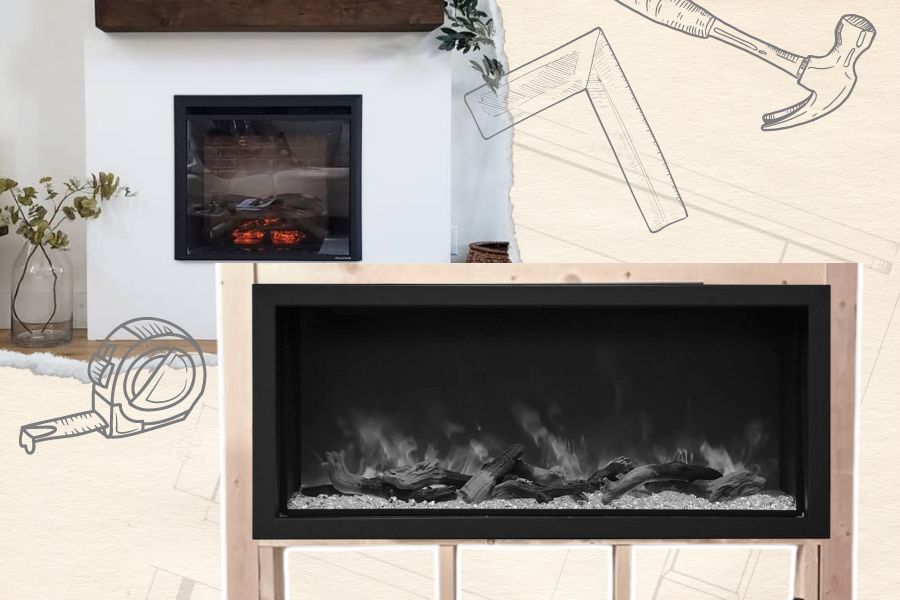When it comes to installing a fireplace, proper framing is essential. Framing not only provides structural support but also ensures the safety and efficiency of your fireplace.
This comprehensive guide will take you through the step-by-step process of framing a fireplace to help you create a beautiful and functional centerpiece in your home.
Understanding the Importance of Proper Fireplace Framing
Proper fireplace framing is essential for a secure installation and long-term functionality. It provides stability, prevents damage to surrounding structures, and ensures efficient heat distribution.
Correct framing creates a professional finish and allows for customization with additional features. Adhering to building codes is crucial for safety.
Consulting professionals ensure accurate framing, resulting in a safe and visually appealing fireplace.
The Basics of Fireplace Framing: A Step-by-Step Guide
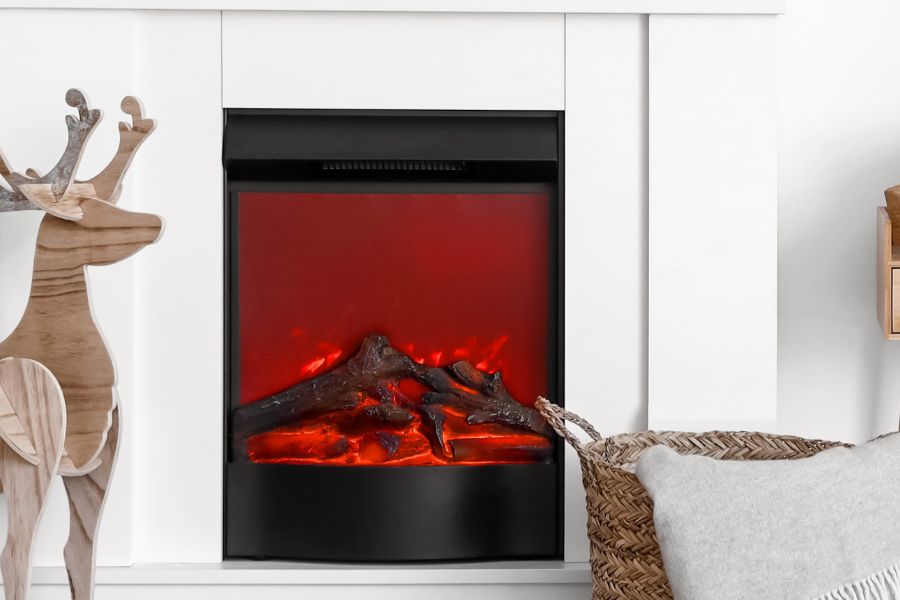
Before diving into the specifics, it’s important to understand the basic principles of fireplace framing. This section will cover the fundamental steps involved in framing a fireplace, including:
- Determining the location and type of fireplace: Whether you’re opting for a traditional wood-burning fireplace or a modern electric fireplace, the first step is to decide where it will be installed and what type of fireplace you prefer.
- Gathering the necessary tools and materials: To complete the framing project successfully, you’ll need a range of tools such as a tape measure, framing square, circular saw, and materials like lumber, nails, and screws.
- Measuring and marking the dimensions: Accurate measurements are crucial to ensure a proper fit for your old fireplace. We’ll guide you through measuring and marking the necessary dimensions on the surrounding walls.
- Cutting and assembling the frame: With the measurements in hand, it’s time to cut the lumber and assemble the frame that will house your fireplace. We’ll provide detailed instructions on creating a sturdy and level frame.
Choosing the Right Location for Your Fireplace
The placement of your fireplace plays a significant role in its functionality and visual impact.
Before deciding on a location, consider the existing structures in your home, such as load-bearing walls, electrical outlets, or plumbing lines. These elements can affect the installation process and may require adjustments to your framing plans.
Additionally, understanding the clearance requirements is essential to ensure safety. You must maintain appropriate distances from combustible materials, walls, and ceilings to prevent any fire hazards.
Furthermore, ventilation and air circulation are important factors to consider. Proper airflow around the fireplace ensures efficient heating and prevents overheating of the surrounding areas.
Planning Your Fireplace Framing Project
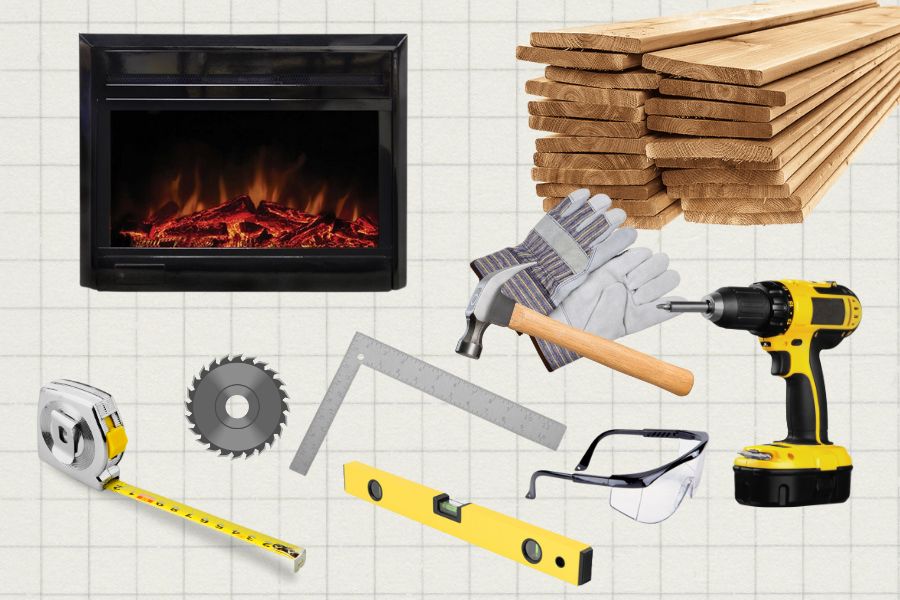
You’ll need the right tools and materials to frame a fireplace successfully.
Some essential tools include a tape measure, framing square, circular saw, hammer, drill, level, and safety equipment such as gloves and goggles.
These tools will help you accurately measure, cut, and assemble the framing elements.
As for materials, you’ll require lumber (commonly 2×4 or 2×6), nails, screws, construction adhesive, vapor barrier, insulation, and fire-rated drywall.
Gathering these materials in advance will ensure a smooth and efficient framing process.
Precautions and Considerations for Framing a Fireplace
Safety should always be a priority when working with fireplaces. Several precautions and considerations should be taken into account to ensure a safe installation.
First, follow fire safety guidelines using fire-rated materials and adhering to clearance requirements. Familiarize yourself with local building codes to ensure compliance. Personal protective equipment (PPE) is essential during the framing process.
Wearing appropriate safety gear, such as gloves and goggles, will protect you from potential injuries. If you’re installing an electric fireplace, be mindful of electrical considerations.
Determining the Dimensions of Your Fireplace
Accurate measurements are critical for a well-fitted electric fireplace frame. Start by measuring the fireplace’s width, height, and depth using tape. Take into account the electric fireplace insert or unit you plan to install.
Once you have the measurements, mark the outline of the fireplace on the floor and surrounding walls using a pencil or chalk.
This will serve as a guide during the framing process, ensuring that the entire surface of your DIY fireplace frame aligns with your desired location and height.
Choosing the Right Type of Fireplace
Electric fireplaces provide convenience, efficiency, and versatility. There are various types to consider. Wall-mounted electric fireplaces offer a sleek and modern solution that can be easily installed on any wall.
Electric fireplace inserts are designed to be placed inside existing fireplaces, allowing for a straightforward conversion from wood-burning to electric.
Alternatively, electric fireplace TV stands combine a fireplace’s warmth with a TV stand’s functionality, serving as stylish entertainment centers.
Consider your space and preferences when choosing the type of electric fireplace that best suits your needs.
DIY Electric Fireplace
DIY electric fireplaces offer an affordable and convenient way to add the cozy ambiance of a fireplace to your home.
They are easy to install, powered by electricity, and feature adjustable flame effects. With multiple heat settings, they can be enjoyed year-round.
These low-maintenance, energy-efficient fireplaces come in various sizes and styles to suit your space and decor preferences.
Unlike traditional fireplaces, DIY electric fireplaces don’t require a chimney or venting system, making them accessible for homeowners of all skill levels.
Understanding Fireplace Insert
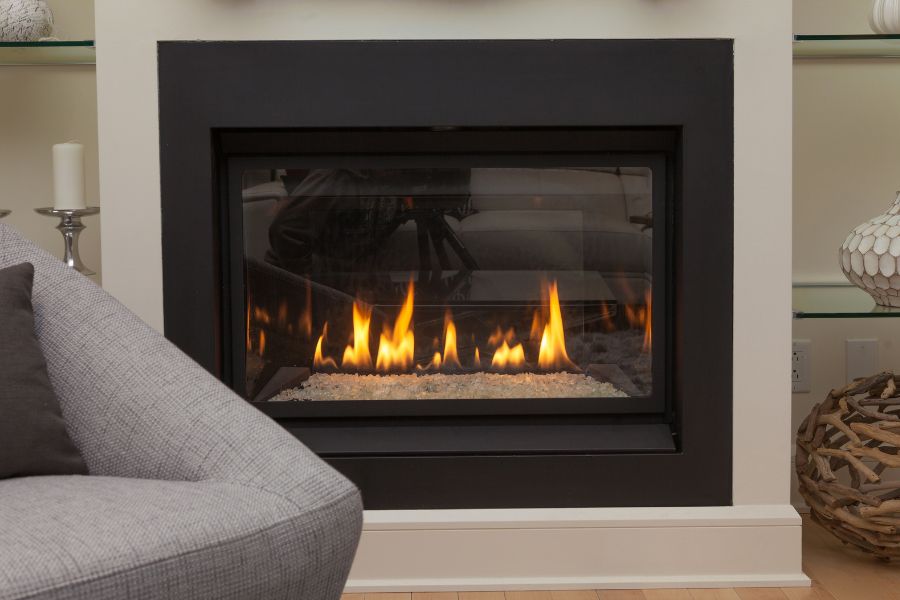
Fireplace inserts improve the efficiency and functionality of existing fireplaces by creating a closed combustion system. They come in different sizes and designs, fueled by electricity, gas, or pellets.
Installing an insert directs more heat into your living space, making your fireplace insert a more effective heating source. This reduces energy consumption and lowers heating costs.
Consider factors like fuel type, heating capacity, and safety regulations when choosing a fireplace insert, and consult a professional for proper installation.
Framing for Electric Fireplace Inserts: Step-by-Step Instructions
Framing for an electric fireplace insert involves building a structure that securely supports and houses the insert.
The exact steps may vary depending on the specific insert and fireplace opening dimensions, but the following general guidelines can help you get started:
- Measure and mark the dimensions: Begin by measuring the dimensions of your fireplace opening. Ensure that the electric fireplace frame is slightly larger than the insert to provide a snug fit. Mark the surrounding walls’ dimensions, indicating the fireplace frame’s height, width, and depth.
- Gather the necessary tools and materials: Prepare the tools and materials required for framing, including a saw, screws or nails, framing lumber, and a level. It’s important to use sturdy and fire-resistant materials that can withstand the heat generated by the fireplace.
- Build the frame: Start by constructing the vertical sides of the fireplace frame using the measured dimensions. Attach the vertical pieces to the surrounding walls, ensuring they are plumb and level. Then, build the horizontal top and bottom pieces, connecting them to the vertical sides. Double-check the measurements and use a level to ensure the frame is straight and aligned.
- Reinforce the frame: To enhance the stability of the DIY fireplace frame, add additional support pieces or cross-bracing as necessary. This will help prevent any shifting or movement once the insert is installed.
- Prepare for electrical connections: If your electric fireplace insert requires electrical connections, ensure that there is an accessible electrical outlet nearby. Consult a qualified electrician if necessary to ensure proper wiring and safety precautions.
Remember to refer to the manufacturer’s instructions and consult professionals if needed for guidance specific to your electric fireplace insert and framing requirements.
Exploring Different Fireplace Surround Options
The fireplace surround plays a crucial role in your existing fireplace’s overall appearance and style. There are various options to consider when selecting a surround, each offering its own unique aesthetic.
Stone surrounds, such as marble or granite, exude elegance and natural beauty, while brick surrounds provide a classic and timeless look. Tile surrounds offer endless possibilities in terms of colors and patterns, allowing for a more personalized touch.
Wood surrounds bring warmth and character to any space, with the option to stain or paint them to suit the room and challenge your desired style.
Combining different materials is also an option, creating a unique and customized fireplace surround that perfectly matches your preferences and interior decor.
Traditional Fireplace Surrounds: Adding Elegance and Charm to Your Space
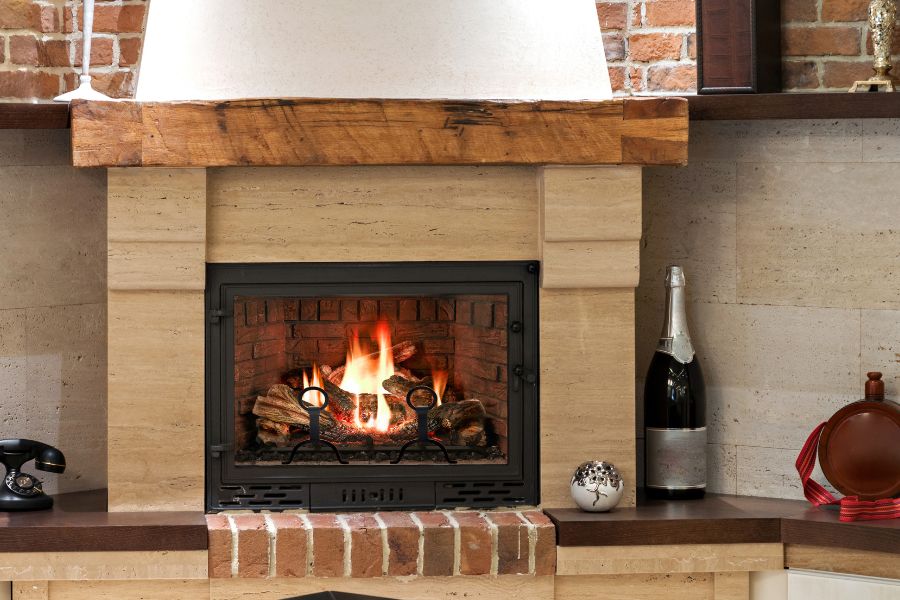
Traditional fireplace surrounds are known for their timeless elegance and intricate details.
They often feature ornate carvings, rich materials like marble or wood, and a focus on symmetry and balance.
Traditional surrounds add a touch of sophistication and charm to any room, making them a popular choice for those seeking a classic aesthetic.
Contemporary Fireplace Surrounds: Embracing Modern Design Aesthetics
Contemporary fireplace surrounds embrace sleek lines, minimalist designs, and modern materials.
They prioritize clean and uncluttered aesthetics, often incorporating glass, metal, or concrete elements.
Geometric shapes and asymmetry are also common features of contemporary surroundings, making them a great choice for those with a preference for a modern and stylish look.
Creating a Custom Fireplace Surround
For a truly personalized touch, consider creating a custom fireplace surround. This allows you to design a unique piece that perfectly matches your style and preferences.
Gather design inspiration from various sources and work with a skilled craftsman or artisan to bring your vision to life. Choose the materials finishes, and incorporate personal touches that reflect your individuality.
Preparing the Area: Removing Obstacles and Preparing the Surrounding Walls
Preparing the area for fireplace framing is essential for a smooth installation process. Remove obstacles and furnishings that may hinder the process, ensuring ample space for maneuvering.
Clean, level and structurally sound surrounding walls are necessary, addressing any repairs or adjustments beforehand.
A well-prepared workspace facilitates accurate measurements and construction, ensuring a successful fireplace framing project.
Framing the Fireplace Opening
Framing the fireplace opening involves constructing a sturdy structure that will support the electric fireplace insert. Start by measuring the dimensions of the opening and marking them on the surrounding walls.
Then, gather the necessary tools and materials and proceed to construct the DIY fireplace frame using appropriate lumber and hardware. Ensure the entire frame is level, plumb, and securely attached to the walls.
Installing an Electric Fireplace
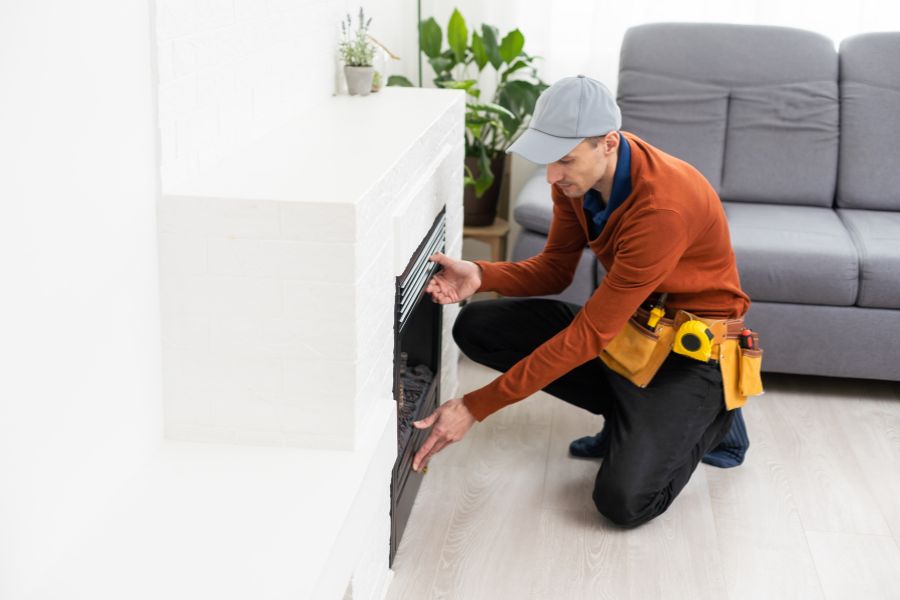
Installing an electric fireplace involves the crucial steps of connecting and securing the unit. Once the framing is complete, carefully follow the manufacturer’s instructions for electrical connections.
Ensure that all electrical wiring is properly installed and meets safety standards. Securely attach the electric fireplace unit within the frame using brackets or screws, ensuring it is level and stable.
Take the time to test the functionality of the fireplace, including the heat settings and flame effects, to ensure everything is working as intended.
Proper installation and secure attachment of the electric or gas fireplace and unit are essential for safe and efficient operation.
Adding Finishing Touches
After installing the electric fireplace insert, adding finishing touches completes the framed fireplace’s appearance.
These include trim, mantels, and decorative elements that enhance the overall aesthetic. Choose trim options like wood framing moldings or metal accents for a clean look.
Select a fireplace mantel that complements your decor, ensuring it doesn’t interfere with the fireplace’s operation. Consider decorative elements such as artwork or mirrors to create a focal point.
Apply paint or finish to match your desired aesthetic fireplace mantel. Ensure secure installation without compromising safety. Thoughtfully select and position each element for a visually appealing fireplace that reflects your style.
Insulation and Fireproofing
Proper insulation and fireproofing are essential for your framed fireplace’s safety and energy efficiency.
Insulate the surrounding walls to prevent heat loss and ensure the heat generated by the fireplace stays within the room.
Use fire-resistant materials and ensure that all components are in compliance with safety regulations and building codes.
Troubleshooting Common Fireplace Framing Issues
During the framing process, you may encounter common issues that require troubleshooting.
These can include uneven walls, structural challenges, or complications with the dimensions of the fireplace opening.
Consult professionals or experienced individuals to seek solutions specific to your situation.
Maintenance and Care: Keeping Your Framed Fireplace in Excellent Condition
Regular maintenance and care are essential to keep your framed fireplace in excellent condition. Follow the manufacturer’s instructions for cleaning and maintenance tasks.
Keep the surrounding area free from dust and debris, and regularly inspect the framing, insert, and surrounding walls for any signs of damage or wear.
Address any issues promptly to ensure your framed fireplace’s longevity and optimal performance.
Enhancing Your Fireplace Surround
Once your framed fireplace is complete, it’s time to enhance its visual appeal through decorating.
Consider adding accessories such as artwork, mirrors, or decorative items that complement the style of your fireplace and the overall decor of the living room or other room.
Choose colors, textures, and patterns that harmonize with the surrounding space, creating a cohesive and inviting atmosphere.
Conclusion
A well-framed fireplace adds warmth, beauty, and a cozy ambiance to your home.
Whether you choose a traditional or contemporary surround, a DIY electric fireplace offers a cost-effective solution that brings comfort and style to your living space.
Following the steps outlined in this guide, you can create a stunning fireplace that reflects your style and becomes a focal point for relaxation and enjoyment.

